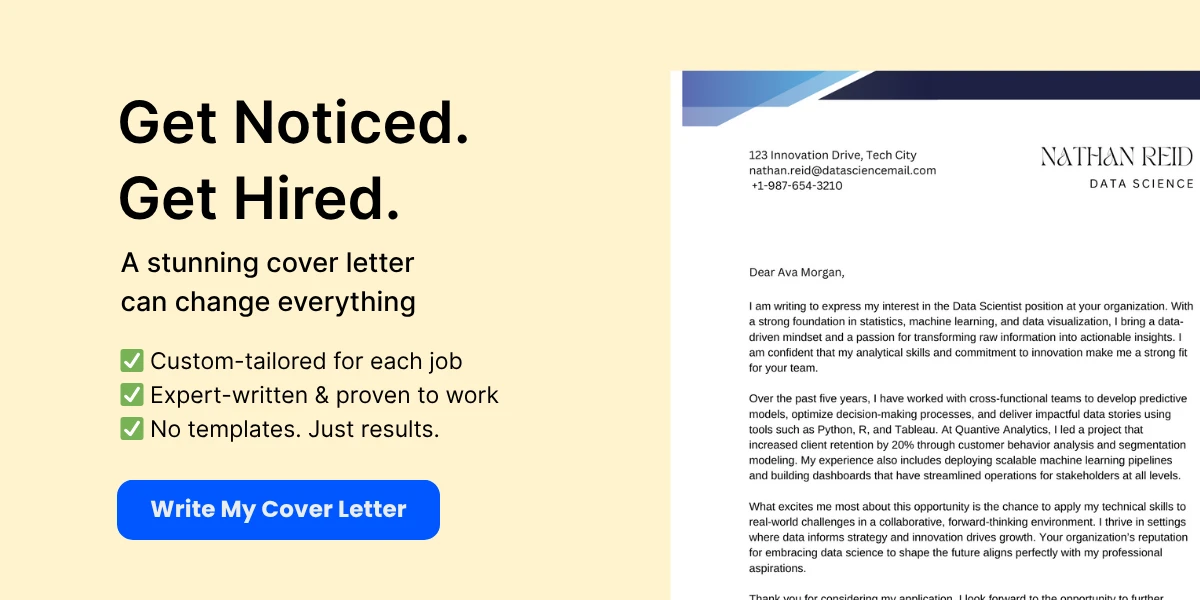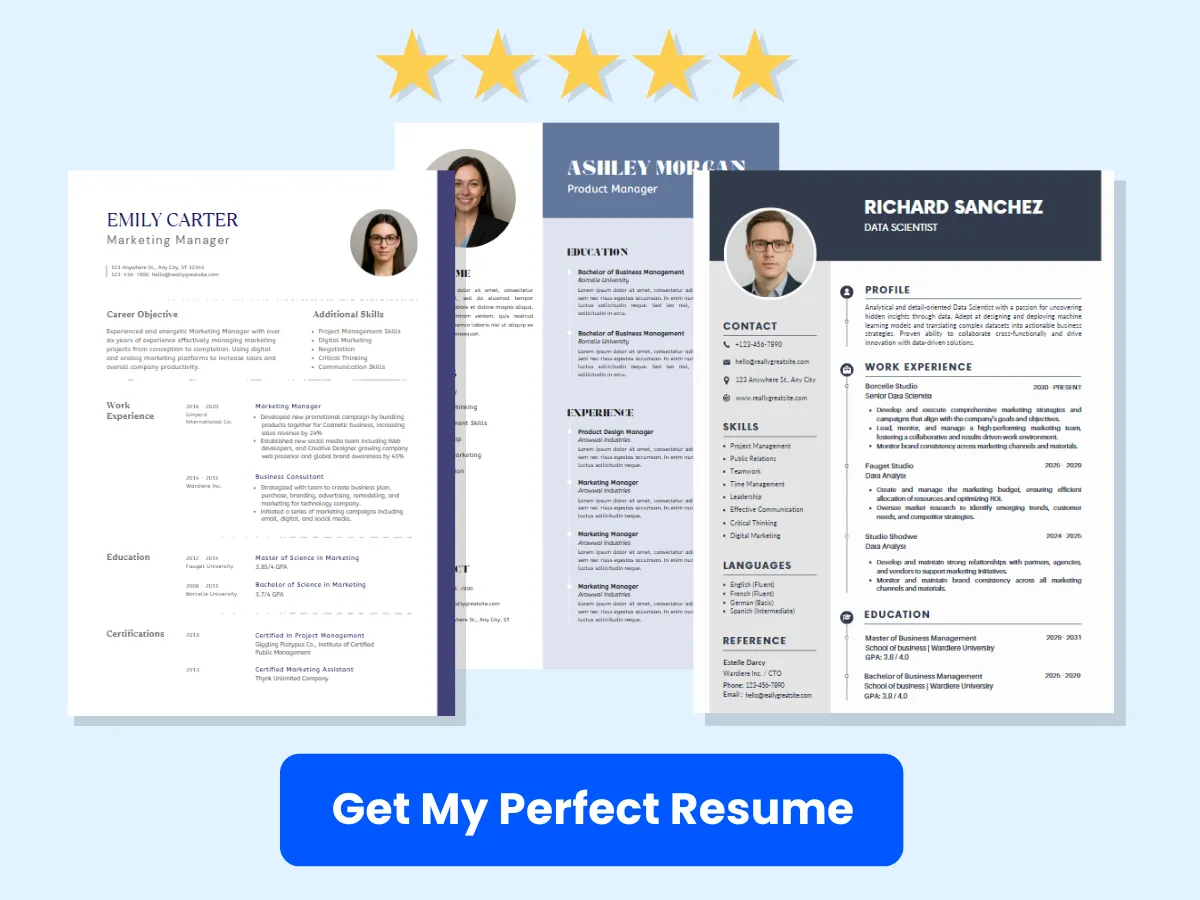Strong leadership skills are not just a desirable trait; they are a crucial component that can set you apart from other candidates. Whether you’re aiming for a managerial position or seeking to advance within your current organization, showcasing your leadership abilities on your resume can significantly enhance your appeal to potential employers. But how do you effectively communicate these skills in a way that resonates with hiring managers?
This article delves into the art of highlighting leadership skills on your resume, providing you with practical strategies and insights to make your application stand out. You’ll learn how to identify and articulate your leadership experiences, tailor your resume to reflect your strengths, and utilize powerful language that captures attention. By the end, you’ll be equipped with the tools to present yourself as a confident and capable leader, ready to take on new challenges and drive success in any organization.
Exploring Leadership Skills
Definition and Scope of Leadership Skills
Leadership skills encompass a range of abilities that enable an individual to guide, motivate, and influence others towards achieving common goals. These skills are not limited to formal leadership positions; they can be demonstrated by anyone in a team setting, regardless of their title. Effective leadership is characterized by the ability to communicate a vision, inspire trust, and foster collaboration among team members.
At its core, leadership is about making decisions that affect the direction of a group and ensuring that those decisions are executed effectively. This requires a deep understanding of both the people being led and the context in which they operate. Leadership skills can be broadly categorized into interpersonal skills, strategic thinking, and operational capabilities.
Interpersonal skills include communication, empathy, and conflict resolution. These skills are essential for building relationships and creating a positive team environment. Strategic thinking involves the ability to analyze complex situations, foresee potential challenges, and devise effective solutions. Operational capabilities refer to the practical aspects of leadership, such as project management and resource allocation.


Types of Leadership Styles
Understanding different leadership styles is crucial for identifying and highlighting your own leadership skills on your resume. Each style has its strengths and weaknesses, and the effectiveness of a particular style often depends on the context and the individuals involved. Here are some of the most recognized leadership styles:
- Transformational Leadership: This style focuses on inspiring and motivating team members to exceed their own self-interests for the sake of the organization. Transformational leaders are often seen as visionaries who encourage innovation and change.
- Transactional Leadership: In contrast to transformational leadership, transactional leaders focus on the exchange between leader and follower. They establish clear structures and expectations, rewarding compliance and performance while addressing deviations from the norm.
- Servant Leadership: Servant leaders prioritize the needs of their team members, fostering a culture of trust and collaboration. This style emphasizes empathy, active listening, and community building.
- Autocratic Leadership: Autocratic leaders make decisions unilaterally, often without input from team members. While this style can lead to quick decision-making, it may also stifle creativity and morale.
- Democratic Leadership: Democratic leaders encourage participation and input from team members, fostering a sense of ownership and commitment. This style can lead to higher job satisfaction and better team cohesion.
- Laissez-Faire Leadership: This hands-off approach allows team members to make decisions and take the lead on projects. While it can empower individuals, it may also lead to a lack of direction if not managed properly.
When highlighting your leadership skills on your resume, consider which style resonates most with your experiences and the roles you are applying for. Tailoring your resume to reflect the leadership style that aligns with the job description can significantly enhance your appeal to potential employers.
Core Leadership Competencies
Core leadership competencies are the essential skills and attributes that effective leaders possess. These competencies can be developed over time and are critical for anyone looking to advance their career. Here are some key competencies to consider:
- Communication: Effective leaders must be able to convey their ideas clearly and persuasively. This includes not only verbal communication but also written communication and active listening. Highlighting your ability to communicate effectively can demonstrate your leadership potential.
- Emotional Intelligence: Emotional intelligence (EI) is the ability to understand and manage your own emotions while also recognizing and influencing the emotions of others. Leaders with high EI can build strong relationships, navigate social complexities, and make informed decisions.
- Decision-Making: Leaders are often faced with difficult choices that require careful consideration and analysis. Demonstrating your decision-making skills, especially in high-pressure situations, can showcase your leadership capabilities.
- Problem-Solving: The ability to identify problems, analyze potential solutions, and implement effective strategies is a hallmark of strong leadership. Providing examples of how you have successfully solved problems in the past can strengthen your resume.
- Team Building: A successful leader knows how to build and maintain a cohesive team. This involves recognizing individual strengths, fostering collaboration, and creating an inclusive environment. Highlighting your experience in team building can illustrate your leadership effectiveness.
- Adaptability: The ability to adapt to changing circumstances and remain flexible in the face of challenges is crucial for effective leadership. Employers value leaders who can pivot and adjust their strategies as needed.
- Vision: Strong leaders have a clear vision for the future and can articulate that vision to their teams. This involves setting long-term goals and inspiring others to work towards them. Including examples of how you have developed and communicated a vision can enhance your leadership profile.
When crafting your resume, consider incorporating specific examples that demonstrate these core competencies. Use quantifiable achievements to illustrate your impact as a leader. For instance, instead of simply stating that you “led a team,” you might say, “Led a cross-functional team of 10 to successfully complete a project ahead of schedule, resulting in a 20% increase in efficiency.”
Additionally, consider using action verbs that convey leadership qualities, such as “coordinated,” “mentored,” “facilitated,” and “strategized.” These verbs not only highlight your leadership skills but also convey a sense of proactivity and initiative.
Understanding the definition and scope of leadership skills, recognizing different leadership styles, and identifying core leadership competencies are essential steps in effectively highlighting your leadership abilities on your resume. By tailoring your resume to reflect these elements, you can present yourself as a strong candidate capable of leading teams and driving organizational success.


Identifying Your Leadership Skills
Identifying your leadership skills is a crucial step in showcasing your capabilities on your resume. Strong leadership skills not only enhance your employability but also demonstrate your potential to contribute positively to an organization. This section will explore various methods to identify and articulate your leadership skills effectively.
Self-Assessment Techniques
Self-assessment is a powerful tool for recognizing your leadership strengths and areas for improvement. Here are several techniques to help you conduct a thorough self-assessment:
- Reflective Journaling: Keeping a journal where you document your experiences, challenges, and successes can provide insights into your leadership style. Reflect on situations where you took charge, resolved conflicts, or motivated a team. Ask yourself questions like, “What leadership qualities did I exhibit?” and “How did my actions impact the team?”
- SWOT Analysis: Conducting a SWOT (Strengths, Weaknesses, Opportunities, Threats) analysis can help you identify your leadership skills. List your strengths and weaknesses in leadership, and consider external opportunities and threats that may affect your leadership capabilities. This structured approach can clarify your unique leadership attributes.
- Personality Assessments: Tools like the Myers-Briggs Type Indicator (MBTI) or the DiSC assessment can provide insights into your personality traits and how they relate to leadership. Understanding your personality type can help you identify natural leadership tendencies and areas for growth.
- Goal Setting: Setting specific leadership goals can help you focus on developing particular skills. For example, if you want to improve your decision-making skills, you might set a goal to lead a project where you are responsible for making key decisions. Regularly review your progress towards these goals to assess your development.
Gathering Feedback from Colleagues and Supervisors
Feedback from others can provide a different perspective on your leadership skills. Here are some effective ways to gather constructive feedback:
- 360-Degree Feedback: This comprehensive feedback process involves collecting input from various sources, including peers, subordinates, and supervisors. It provides a well-rounded view of your leadership abilities and highlights areas for improvement. Consider using a structured questionnaire to facilitate this process.
- One-on-One Conversations: Schedule informal discussions with colleagues and supervisors to ask for their insights on your leadership style. Prepare specific questions, such as “What do you think are my strongest leadership qualities?” or “In what situations do you feel I could improve my leadership?”
- Performance Reviews: Review past performance evaluations to identify recurring themes in the feedback you received. Look for comments related to your leadership skills, such as your ability to motivate others, communicate effectively, or manage conflicts.
- Peer Recognition: Pay attention to any recognition or awards you have received from colleagues. These accolades can serve as indicators of your leadership effectiveness and the impact you have had on your team.
Using Professional Development Tools
Professional development tools can help you identify and enhance your leadership skills. Here are some resources to consider:
- Leadership Workshops and Seminars: Participating in workshops and seminars focused on leadership can provide valuable insights and skills. These programs often include assessments that help you identify your leadership style and strengths.
- Mentorship Programs: Engaging with a mentor can provide personalized guidance and feedback on your leadership skills. A mentor can help you identify your strengths and weaknesses and offer advice on how to develop your leadership capabilities.
- Online Courses: Many platforms offer online courses specifically designed to enhance leadership skills. These courses often include assessments that can help you identify your leadership style and areas for improvement. Look for courses that offer practical exercises and real-world applications.
- Networking Events: Attending industry networking events can expose you to different leadership styles and practices. Engaging with other professionals can provide insights into effective leadership and help you identify your own skills in comparison.
Once you have identified your leadership skills through self-assessment, feedback, and professional development tools, the next step is to articulate these skills effectively on your resume. Highlighting your leadership skills in a compelling way can significantly enhance your chances of landing your desired job.


Identifying your leadership skills is a multifaceted process that involves self-reflection, gathering feedback, and utilizing professional development resources. By employing these techniques, you can gain a clearer understanding of your leadership capabilities and prepare to showcase them effectively on your resume.
Structuring Your Resume for Maximum Impact
Choosing the Right Resume Format
When it comes to showcasing your leadership skills on your resume, the format you choose can significantly impact how your qualifications are perceived. There are three primary resume formats: chronological, functional, and combination. Each has its strengths and weaknesses, and selecting the right one depends on your career history and the specific leadership skills you want to highlight.
- Chronological Resume: This format lists your work experience in reverse chronological order, making it ideal for those with a solid work history in a specific field. If you have held leadership positions consistently, this format allows you to showcase your career progression and the development of your leadership skills over time.
- Functional Resume: This format emphasizes skills over work history, making it suitable for individuals with gaps in employment or those transitioning to a new industry. If your leadership skills are your strongest asset, a functional resume can help you highlight them without being overshadowed by your job titles or dates of employment.
- Combination Resume: This format merges the chronological and functional styles, allowing you to highlight both your skills and your work history. This is particularly effective for candidates with diverse experiences and leadership roles across various industries.
Regardless of the format you choose, ensure that your resume is clean, professional, and easy to read. Use clear headings, bullet points, and consistent formatting to guide the reader’s eye to the most important information.
Crafting a Compelling Summary Statement
Your summary statement is the first thing potential employers will read, making it a critical component of your resume. This brief section should encapsulate your professional identity, key achievements, and the leadership skills that set you apart from other candidates.
To craft a compelling summary statement, consider the following tips:
- Be Concise: Aim for 2-4 sentences that summarize your experience and skills. Avoid jargon and overly complex language.
- Highlight Leadership Skills: Use this space to mention specific leadership skills that are relevant to the job you are applying for. For example, you might say, “Dynamic leader with over 10 years of experience in team management and project execution, known for fostering collaboration and driving results.”
- Quantify Achievements: Whenever possible, include metrics that demonstrate your impact as a leader. For instance, “Led a team of 15 in a project that increased sales by 30% within six months.”
- Tailor to the Job Description: Customize your summary statement for each application by incorporating keywords and phrases from the job description. This not only shows that you are a good fit but also helps your resume get past applicant tracking systems (ATS).
Here’s an example of a strong summary statement:
“Results-driven project manager with over 8 years of experience leading cross-functional teams in the technology sector. Proven track record of delivering projects on time and within budget, with a focus on enhancing team performance and stakeholder engagement. Recognized for implementing innovative solutions that improved operational efficiency by 25%.”

Highlighting Leadership Skills in Different Resume Sections
Once you have chosen the right format and crafted a compelling summary statement, the next step is to strategically highlight your leadership skills throughout your resume. Here are key sections where you can effectively showcase these skills:
Work Experience
Your work experience section is the most critical area for demonstrating your leadership skills. Use bullet points to describe your responsibilities and achievements in each role, focusing on leadership-related tasks. Here are some strategies:
- Use Action Verbs: Start each bullet point with strong action verbs that convey leadership, such as “led,” “managed,” “coordinated,” “developed,” or “mentored.” For example, “Led a team of 10 in the successful launch of a new product line, resulting in a 40% increase in market share.”
- Focus on Results: Whenever possible, quantify your achievements. Instead of saying, “Managed a team,” say, “Managed a team of 12, achieving a 95% employee satisfaction rate and reducing turnover by 15%.”
- Highlight Leadership Initiatives: If you initiated any leadership programs, training sessions, or team-building activities, be sure to mention them. For example, “Developed and implemented a mentorship program that improved junior staff retention by 20%.”
Skills Section
Your skills section is another opportunity to highlight your leadership abilities. Instead of listing generic skills, focus on specific leadership competencies that align with the job description. Examples include:
- Team Leadership
- Conflict Resolution
- Strategic Planning
- Change Management
- Coaching and Mentoring
Consider using a combination of hard and soft skills to provide a well-rounded view of your leadership capabilities. For instance, you might list “Data-Driven Decision Making” alongside “Empathetic Leadership.”
Education and Certifications
In the education section, include any degrees or certifications that are relevant to leadership. For example, if you have completed a leadership development program or earned a certification in project management, be sure to list these. They not only demonstrate your commitment to professional growth but also reinforce your leadership qualifications.
Additional Sections
Depending on your background, you may have additional sections that can highlight your leadership skills:


- Volunteer Experience: If you have held leadership roles in volunteer organizations, include these experiences. They can showcase your ability to lead outside of a traditional work environment.
- Professional Affiliations: Membership in professional organizations, especially in leadership roles, can further validate your leadership skills.
- Projects: If you have led significant projects, consider creating a separate section to detail these experiences, focusing on your leadership role and the outcomes achieved.
By strategically highlighting your leadership skills across various sections of your resume, you can create a compelling narrative that positions you as a strong candidate for leadership roles. Remember to tailor your resume for each application, ensuring that your leadership skills align with the specific requirements of the job.
Detailing Leadership Experience in Work History
Quantifying Achievements and Responsibilities
When it comes to showcasing your leadership skills on your resume, quantifying your achievements and responsibilities is crucial. Numbers and metrics provide concrete evidence of your capabilities and the impact you’ve made in previous roles. Instead of simply stating that you led a team, consider the following approach:
- Use Specific Metrics: Instead of saying, “Managed a team,” you could say, “Managed a team of 10 sales representatives, achieving a 25% increase in quarterly sales.” This not only highlights your leadership role but also demonstrates the tangible results of your efforts.
- Highlight Scope and Scale: If you were responsible for a significant project or initiative, detail the scope. For example, “Oversaw a $1 million project from inception to completion, delivering it 2 weeks ahead of schedule and under budget.” This shows your ability to handle large responsibilities effectively.
- Show Improvement Over Time: If you can illustrate growth or improvement, it adds weight to your leadership experience. For instance, “Implemented a new training program that reduced employee onboarding time by 30% and improved retention rates by 15% over one year.”
Quantifying your achievements not only makes your resume more compelling but also allows potential employers to visualize the value you can bring to their organization. Remember, the goal is to provide a clear picture of your leadership capabilities through measurable outcomes.
Using Action-Oriented Language
Action-oriented language is essential in conveying your leadership experience effectively. The words you choose can significantly impact how your achievements are perceived. Here are some strategies to enhance your resume with powerful action verbs:
- Start with Strong Verbs: Use dynamic verbs that convey leadership and initiative. Words like “led,” “developed,” “coordinated,” “initiated,” and “executed” can make your contributions stand out. For example, instead of saying, “Responsible for team meetings,” you could say, “Facilitated weekly team meetings to drive project alignment and foster collaboration.”
- Be Specific: Instead of vague descriptions, be specific about what you did. For instance, “Directed a cross-functional team to launch a new product line, resulting in a 40% increase in market share within the first year.” This specificity not only highlights your leadership but also the direct impact of your actions.
- Showcase Leadership Styles: If applicable, incorporate your leadership style into your descriptions. For example, “Empowered team members by delegating responsibilities and encouraging innovative solutions, leading to a 50% increase in project efficiency.” This not only shows what you did but also how you did it.
Using action-oriented language not only makes your resume more engaging but also reflects your proactive approach to leadership. It demonstrates that you are not just a passive participant but an active contributor to your team’s success.
Tailoring Descriptions to the Job You’re Applying For
One of the most effective ways to highlight your leadership skills is to tailor your resume descriptions to align with the specific job you’re applying for. This requires a strategic approach to ensure that your leadership experience resonates with the potential employer’s needs:


- Analyze the Job Description: Carefully read the job description to identify key leadership skills and qualities the employer is seeking. Look for specific phrases or requirements that indicate what they value in a leader. For example, if the job emphasizes “team collaboration” and “strategic planning,” ensure your resume reflects these aspects of your experience.
- Match Your Experience: Once you’ve identified the key skills, match your past experiences to these requirements. If the job calls for someone who can “drive team performance,” you might say, “Drove team performance by implementing a new performance management system that increased productivity by 20%.” This direct alignment shows that you are a suitable candidate for the role.
- Use Keywords: Incorporate relevant keywords from the job description into your resume. Many companies use Applicant Tracking Systems (ATS) to screen resumes, and using the right keywords can help ensure your resume gets noticed. For instance, if the job description mentions “change management,” include that phrase in your experience where applicable.
Tailoring your resume not only demonstrates your attention to detail but also shows that you understand the company’s needs and are prepared to meet them. It positions you as a candidate who is not only qualified but also genuinely interested in the role.
Examples of Leadership Experience on a Resume
To further illustrate how to effectively detail leadership experience, here are a few examples of how to present this information on your resume:
Example 1: Project Manager, ABC Corporation June 2020 - Present - Led a cross-functional team of 15 in the successful launch of a new software product, achieving a 30% increase in user adoption within the first quarter. - Developed and implemented a project management framework that improved project delivery timelines by 25%. - Facilitated bi-weekly strategy sessions to align team goals with organizational objectives, resulting in a 15% increase in overall team performance. Example 2: Sales Team Leader, XYZ Inc. January 2018 - May 2020 - Managed a team of 12 sales representatives, driving a 40% increase in annual revenue through targeted training and performance coaching. - Initiated a mentorship program that paired new hires with experienced team members, reducing onboarding time by 35%. - Spearheaded a customer feedback initiative that improved client satisfaction scores by 20% over two years. Example 3: Operations Supervisor, DEF Logistics March 2016 - December 2017 - Oversaw daily operations for a logistics team of 20, implementing process improvements that reduced operational costs by 15%. - Coordinated cross-departmental collaboration to streamline supply chain processes, resulting in a 10% increase in delivery efficiency. - Trained and mentored junior staff, fostering a culture of continuous improvement and professional development.
These examples not only highlight leadership roles but also quantify achievements and use action-oriented language, making them compelling to potential employers. By following these guidelines, you can effectively showcase your leadership skills and experiences, making your resume a powerful tool in your job search.
Showcasing Leadership in Other Resume Sections
Leadership in Volunteer Work and Extracurricular Activities
When it comes to demonstrating strong leadership skills on your resume, many candidates overlook the value of volunteer work and extracurricular activities. However, these experiences can provide compelling evidence of your leadership capabilities, especially if you are early in your career or transitioning to a new field. Employers often appreciate candidates who have taken the initiative to lead in non-professional settings, as it reflects a commitment to community and personal growth.
To effectively showcase your leadership in these areas, consider the following strategies:
- Be Specific: Instead of simply listing your volunteer roles, describe your specific contributions and the impact of your leadership. For example, rather than stating, “Led a community service project,” you could say, “Organized a community clean-up event that mobilized over 50 volunteers, resulting in the collection of 1,000 pounds of waste and increased community awareness about environmental issues.”
- Quantify Your Achievements: Numbers speak volumes. Whenever possible, quantify your achievements to provide context and scale. For instance, “As president of the university debate club, I increased membership by 40% and led our team to the national finals.” This not only highlights your leadership but also your ability to drive results.
- Highlight Transferable Skills: Many leadership skills are transferable across different contexts. Skills such as communication, conflict resolution, and team management are valuable in both professional and volunteer settings. Make sure to articulate how these skills were applied in your volunteer roles.
Incorporating these elements into your resume can help paint a fuller picture of your leadership abilities, making you a more attractive candidate to potential employers.


Including Leadership Training and Certifications
Formal training and certifications can significantly enhance your resume, particularly when it comes to showcasing leadership skills. Many organizations offer leadership development programs that equip individuals with essential skills and knowledge. Including these on your resume not only demonstrates your commitment to personal and professional growth but also signals to employers that you are serious about your leadership journey.
Here are some tips for effectively including leadership training and certifications on your resume:
- List Relevant Certifications: If you have completed any leadership training programs or obtained certifications, be sure to list them in a dedicated section on your resume. For example, certifications such as “Certified Project Management Professional (PMP)” or “Leadership in Energy and Environmental Design (LEED)” can be particularly relevant depending on your field.
- Describe the Training: Provide a brief description of the training or certification, including the skills you acquired and how they relate to your leadership capabilities. For instance, “Completed a 12-week Leadership Development Program focused on strategic decision-making and team dynamics, resulting in improved team performance in my department.”
- Highlight Continuous Learning: Employers value candidates who are committed to lifelong learning. If you are currently pursuing additional leadership training or certifications, mention this on your resume. For example, “Currently enrolled in a Leadership Excellence program to further develop my skills in conflict resolution and team motivation.”
By showcasing your leadership training and certifications, you not only validate your skills but also demonstrate your proactive approach to leadership development.
Highlighting Leadership in Professional Affiliations
Professional affiliations can serve as a powerful testament to your leadership skills. Being an active member of professional organizations not only shows your commitment to your field but also provides opportunities to take on leadership roles. Whether you are serving on a committee, leading a project, or organizing events, these experiences can significantly enhance your resume.
Here’s how to effectively highlight your leadership in professional affiliations:
- Detail Your Roles: Clearly outline your roles within the organization. Instead of simply stating your membership, specify any leadership positions you held. For example, “Served as the Vice President of the Marketing Association, where I led a team of 10 in organizing a regional conference that attracted over 300 attendees.”
- Showcase Contributions: Describe your contributions and the impact of your leadership. For instance, “As a committee chair for the Annual Fundraising Gala, I implemented new strategies that increased donations by 25% compared to the previous year.” This not only highlights your leadership but also your ability to achieve tangible results.
- Connect to Your Career Goals: When listing professional affiliations, connect them to your career aspirations. For example, if you are seeking a leadership role in a specific industry, mention how your involvement in relevant organizations has prepared you for that role. “Active member of the National Association of Sales Professionals, where I have honed my leadership skills through collaborative projects and networking opportunities.”
By effectively highlighting your leadership roles in professional affiliations, you can demonstrate to potential employers that you are not only engaged in your field but also capable of leading and inspiring others.
Showcasing leadership skills on your resume goes beyond simply listing job titles. By incorporating your experiences in volunteer work, training, and professional affiliations, you can create a comprehensive picture of your leadership capabilities. This approach not only enhances your resume but also positions you as a strong candidate ready to take on leadership challenges in your next role.
Using Keywords to Pass Applicant Tracking Systems (ATS)
Exploring ATS and Its Importance
Having a well-crafted resume is essential, but it’s not just about the content; it’s also about how that content is presented. Many companies utilize Applicant Tracking Systems (ATS) to streamline their hiring processes. These systems are designed to filter resumes based on specific criteria, including keywords that match the job description. Understanding how ATS works is crucial for job seekers, especially those looking to highlight their strong leadership skills.
ATS software scans resumes for relevant keywords and phrases that align with the job posting. If your resume lacks these keywords, it may be automatically disqualified, regardless of your qualifications. This means that even the most experienced leaders can find themselves overlooked if their resumes do not effectively communicate their skills in a way that resonates with the ATS.
For instance, if a job description emphasizes the need for “strategic planning” and “team management,” your resume must include these exact phrases to pass through the ATS filters. Therefore, understanding the importance of ATS is the first step in ensuring your leadership skills are recognized by potential employers.
Identifying Relevant Leadership Keywords
Identifying the right keywords to showcase your leadership skills is a critical step in optimizing your resume for ATS. Start by carefully reviewing the job descriptions of positions you are interested in. Look for recurring terms and phrases that relate to leadership. Here are some common leadership-related keywords to consider:
- Leadership – This is a fundamental keyword that should be included in various contexts throughout your resume.
- Team Management – Highlight your ability to manage and lead teams effectively.
- Strategic Planning – Emphasize your experience in developing and implementing strategic initiatives.
- Project Management – Showcase your skills in overseeing projects from inception to completion.
- Conflict Resolution – Mention your ability to mediate and resolve conflicts within teams.
- Mentoring – Highlight your experience in guiding and developing team members.
- Decision Making – Illustrate your capacity to make informed decisions that benefit the organization.
- Performance Improvement – Discuss your role in enhancing team or organizational performance.
- Change Management – Include your experience in leading teams through transitions and changes.
- Collaboration – Emphasize your ability to work effectively with others to achieve common goals.
In addition to these keywords, consider industry-specific terms that may be relevant to the positions you are applying for. For example, if you are in the tech industry, terms like “agile leadership” or “cross-functional team leadership” may be pertinent. Tailoring your keywords to the specific job and industry will enhance your chances of passing the ATS.
Strategically Placing Keywords Throughout Your Resume
Once you have identified the relevant leadership keywords, the next step is to strategically place them throughout your resume. Here are some key areas to focus on:
1. Resume Summary
Your resume summary is one of the first sections that ATS will scan. This is your opportunity to make a strong first impression. Incorporate leadership keywords naturally into this section. For example:
“Dynamic and results-driven leader with over 10 years of experience in strategic planning and team management. Proven track record of enhancing performance and driving organizational change through effective project management and conflict resolution.”
2. Work Experience
In the work experience section, use bullet points to describe your responsibilities and achievements. Each bullet point should begin with a strong action verb and include relevant keywords. For example:
- Led a cross-functional team of 15 in the successful implementation of a new project management system, resulting in a 30% increase in efficiency.
- Developed and executed strategic plans that improved team performance by 25% over two years.
- Facilitated conflict resolution sessions that enhanced team collaboration and reduced turnover by 15%.
By using specific metrics and outcomes, you not only highlight your leadership skills but also demonstrate their impact on the organization.
3. Skills Section
The skills section of your resume is another critical area for keyword placement. List your leadership skills using the keywords you’ve identified. For example:
- Leadership
- Team Management
- Strategic Planning
- Project Management
- Change Management
Make sure to include both hard and soft skills, as both are essential for effective leadership.
4. Education and Certifications
If you have completed any leadership training or certifications, be sure to include them in your education section. This not only adds credibility to your leadership skills but also provides additional keywords. For example:
- Certified Project Management Professional (PMP)
- Leadership Development Program, XYZ University
5. Tailoring Your Resume for Each Application
One of the most effective strategies for passing ATS is to tailor your resume for each job application. This means adjusting your keywords based on the specific job description. While it may be tempting to use a one-size-fits-all resume, customizing your content will significantly increase your chances of getting noticed.
For instance, if a job description emphasizes “mentoring” and “team collaboration,” ensure these keywords are prominently featured in your resume. This not only helps you pass the ATS but also demonstrates to hiring managers that you have taken the time to understand the role and its requirements.
6. Avoiding Common Pitfalls
While it’s essential to include keywords, it’s equally important to avoid common pitfalls that can hinder your resume’s effectiveness:
- Keyword Stuffing: Avoid overloading your resume with keywords. This can make your resume sound unnatural and may be flagged by ATS.
- Using Synonyms: Stick to the exact keywords used in the job description. ATS may not recognize synonyms or variations.
- Neglecting Formatting: While ATS can read text, complex formatting can confuse the system. Use standard fonts and avoid graphics or images.
By being mindful of these pitfalls, you can create a resume that effectively highlights your leadership skills while also being ATS-friendly.
Understanding how to leverage keywords to pass Applicant Tracking Systems is crucial for job seekers aiming to showcase their leadership skills. By exploring ATS, identifying relevant keywords, and strategically placing them throughout your resume, you can significantly enhance your chances of landing an interview. Remember, your resume is often the first impression you make on potential employers, so make it count!
Crafting Impactful Leadership Bullet Points
The STAR Method (Situation, Task, Action, Result)
When it comes to showcasing your leadership skills on your resume, clarity and impact are paramount. One of the most effective frameworks for crafting compelling bullet points is the STAR method. This technique helps you structure your achievements in a way that highlights your leadership capabilities through a clear narrative. The STAR acronym stands for:
- Situation: Describe the context within which you performed a task or faced a challenge.
- Task: Explain the specific responsibilities or challenges you were tasked with.
- Action: Detail the actions you took to address the situation or complete the task.
- Result: Share the outcomes of your actions, emphasizing the impact you made.
Using the STAR method not only provides a structured approach to writing your bullet points but also ensures that you convey the significance of your leadership skills effectively. Here’s how to apply it:
Example of STAR Method in Action
Let’s say you led a team project that resulted in a significant increase in sales. Here’s how you might break it down using the STAR method:
- Situation: “In Q1 of 2022, our sales team was struggling to meet targets due to a lack of effective communication and collaboration.”
- Task: “As the team leader, I was responsible for identifying the issues and implementing a solution to improve team performance.”
- Action: “I organized weekly strategy meetings, introduced a new project management tool, and facilitated team-building exercises to enhance collaboration.”
- Result: “As a result, our team exceeded sales targets by 30% in Q2, and employee engagement scores improved by 25%.”
When you translate this into a bullet point for your resume, it might look like this:
• Led a team to exceed sales targets by 30% in Q2 2022 by implementing weekly strategy meetings and a new project management tool, resulting in a 25% increase in employee engagement.Examples of Strong Leadership Bullet Points
Crafting strong leadership bullet points requires specificity and quantifiable results. Here are several examples across different industries that illustrate how to effectively highlight leadership skills:
1. Project Management
• Directed a cross-functional team of 15 in the successful launch of a new product line, achieving a 40% increase in market share within the first year.2. Team Development
• Mentored and developed a team of 10 junior analysts, resulting in three promotions within one year and a 50% reduction in turnover rates.3. Change Management
• Spearheaded a company-wide initiative to transition to remote work, leading to a 20% increase in productivity and a 15% decrease in operational costs.4. Conflict Resolution
• Resolved a long-standing conflict between departments by facilitating open communication sessions, resulting in a 30% improvement in inter-departmental collaboration.5. Strategic Planning
• Developed and executed a strategic plan that increased annual revenue by $2 million through targeted marketing and operational efficiencies.Each of these examples not only highlights leadership skills but also provides measurable outcomes that demonstrate the effectiveness of those skills in a professional context. When writing your own bullet points, aim for a similar structure: start with a strong action verb, provide context, and conclude with quantifiable results.
Common Mistakes to Avoid
While crafting impactful leadership bullet points, it’s essential to avoid common pitfalls that can undermine your message. Here are some mistakes to watch out for:
1. Being Vague
One of the most significant errors is using vague language that doesn’t convey the full scope of your leadership experience. Instead of saying, “Led a team,” specify the size of the team and the context. For example, “Led a team of 20 in a high-stakes project that resulted in a 15% increase in efficiency.”
2. Focusing on Responsibilities Instead of Achievements
Many candidates make the mistake of listing their job responsibilities rather than their achievements. Instead of saying, “Responsible for managing a team,” focus on what you accomplished in that role. For instance, “Managed a team that successfully completed a project ahead of schedule, saving the company $50,000.”
3. Lack of Quantifiable Results
Employers are looking for evidence of your impact. Always strive to include numbers, percentages, or other metrics that demonstrate your success. For example, instead of saying, “Improved team performance,” say, “Improved team performance by 25% through targeted training and development initiatives.”
4. Using Passive Language
Active language is more engaging and impactful. Avoid phrases like “was responsible for” or “was involved in.” Instead, use strong action verbs such as “led,” “developed,” “implemented,” or “achieved.”
5. Neglecting Soft Skills
While it’s essential to highlight hard skills and achievements, don’t forget to showcase your soft skills, which are equally important in leadership roles. Skills such as communication, empathy, and adaptability can be woven into your bullet points. For example, “Fostered a culture of open communication, resulting in a 40% increase in employee satisfaction scores.”
By avoiding these common mistakes and focusing on crafting clear, impactful bullet points using the STAR method, you can effectively highlight your leadership skills on your resume. Remember, the goal is to present yourself as a results-driven leader who can make a significant impact in any organization.
Leveraging Cover Letters and LinkedIn Profiles
Integrating Leadership Skills into Your Cover Letter
Your cover letter is often the first impression you make on a potential employer, and it provides a unique opportunity to showcase your leadership skills in a narrative format. Unlike a resume, which is typically a list of achievements and responsibilities, a cover letter allows you to tell a story about your professional journey, emphasizing how your leadership abilities have contributed to your success.
To effectively integrate leadership skills into your cover letter, consider the following strategies:
- Start with a Strong Opening: Begin your cover letter with a compelling introduction that captures the reader’s attention. You might start with a brief anecdote that illustrates your leadership style or a significant achievement that required strong leadership. For example, “During my tenure as a project manager at XYZ Corp, I led a cross-functional team to successfully launch a product that exceeded sales projections by 30% in its first quarter.”
- Use Specific Examples: When discussing your leadership skills, provide concrete examples that demonstrate your abilities. Instead of simply stating that you are a strong leader, describe a situation where you successfully led a team through a challenging project. For instance, “When faced with a tight deadline, I organized daily stand-up meetings to ensure clear communication and accountability, resulting in the project being completed two weeks ahead of schedule.”
- Highlight Relevant Skills: Tailor your cover letter to the specific job you are applying for by highlighting leadership skills that are relevant to the position. If the job description emphasizes the need for strategic thinking, discuss how you have developed and implemented strategies that have positively impacted your team or organization.
- Showcase Results: Employers want to see the impact of your leadership. Use metrics and outcomes to quantify your achievements. For example, “By implementing a new training program, I improved team productivity by 25%, which directly contributed to a 15% increase in overall sales.”
- Conclude with Confidence: End your cover letter with a strong closing statement that reiterates your enthusiasm for the position and your confidence in your leadership abilities. For example, “I am excited about the opportunity to bring my leadership skills to ABC Company and contribute to your mission of innovation and excellence.”
Enhancing Your LinkedIn Profile to Reflect Leadership
In today’s digital age, your LinkedIn profile serves as an online extension of your resume and cover letter. It is essential to ensure that your profile effectively highlights your leadership skills and experiences. Here are some strategies to enhance your LinkedIn profile:
- Craft a Compelling Headline: Your LinkedIn headline is one of the first things people see. Instead of just listing your job title, consider incorporating your leadership skills. For example, “Dynamic Project Manager | Expert in Team Leadership and Strategic Planning.”
- Write a Strong Summary: Your summary section is your chance to tell your professional story. Use this space to highlight your leadership philosophy, key achievements, and the impact you’ve made in previous roles. For instance, “As a results-driven leader with over 10 years of experience in the tech industry, I have a proven track record of leading diverse teams to achieve ambitious goals and drive innovation.”
- Showcase Leadership Roles: In the experience section, be sure to highlight any leadership roles you have held, even if they were informal. Use bullet points to detail your responsibilities and achievements in these roles. For example, “Led a team of 10 in the successful execution of a $1 million marketing campaign, resulting in a 40% increase in brand awareness.”
- Utilize Recommendations: Recommendations from colleagues, supervisors, or team members can provide powerful testimonials to your leadership abilities. Reach out to your network and ask for recommendations that specifically highlight your leadership skills and contributions.
- Engage with Content: Share articles, comment on posts, and write your own content related to leadership. This not only showcases your expertise but also positions you as a thought leader in your field. For example, you might write a post about the importance of emotional intelligence in leadership and share your experiences in developing this skill.
Consistency Across All Professional Documents
When applying for jobs, it is crucial to maintain consistency across all your professional documents, including your resume, cover letter, and LinkedIn profile. This consistency reinforces your personal brand and ensures that potential employers receive a cohesive message about your leadership skills. Here are some tips to achieve this:
- Use Similar Language: Pay attention to the language and terminology you use across your documents. If you describe yourself as a “collaborative leader” in your resume, use the same phrase in your cover letter and LinkedIn profile. This consistency helps to create a strong personal brand.
- Align Your Achievements: Ensure that the achievements you highlight in your resume, cover letter, and LinkedIn profile are aligned. If you mention leading a successful project in your resume, provide more context and detail in your cover letter and LinkedIn profile. This reinforces your credibility and showcases your leadership skills from multiple angles.
- Maintain a Consistent Tone: The tone of your writing should be consistent across all documents. If your resume is formal and concise, your cover letter and LinkedIn profile should reflect a similar tone. This helps to create a unified professional image.
- Regularly Update Your Documents: As you gain new experiences and develop your leadership skills, make sure to update your resume, cover letter, and LinkedIn profile accordingly. This ensures that all your documents reflect your most current skills and achievements.
- Seek Feedback: Before submitting your application or updating your LinkedIn profile, consider seeking feedback from trusted colleagues or mentors. They can provide valuable insights into how effectively you are communicating your leadership skills and whether your documents are consistent.
By effectively integrating your leadership skills into your cover letter, enhancing your LinkedIn profile, and ensuring consistency across all professional documents, you can create a compelling narrative that showcases your leadership abilities and sets you apart from other candidates. Remember, strong leadership is not just about titles or positions; it’s about the impact you make and the way you inspire and guide others toward success.
Key Takeaways:
- Recognize the Importance: Leadership skills are essential in today’s workplace, influencing hiring decisions and career advancement.
- Self-Assessment: Conduct a thorough self-assessment to identify your leadership skills, and seek feedback from colleagues and supervisors to gain a well-rounded perspective.
- Resume Structure: Choose a resume format that best showcases your leadership abilities, and craft a compelling summary statement that highlights your leadership experience.
- Detail Your Experience: Quantify your achievements and responsibilities in previous roles, using action-oriented language to convey your impact effectively.
- Broaden Your Scope: Include leadership experiences from volunteer work, extracurricular activities, and professional development to present a comprehensive view of your capabilities.
- Optimize for ATS: Use relevant leadership keywords strategically throughout your resume to ensure it passes through Applicant Tracking Systems.
- Utilize the STAR Method: When crafting bullet points, apply the STAR method to clearly articulate your leadership experiences and outcomes.
- Consistency is Key: Ensure that your cover letter and LinkedIn profile reflect your leadership skills consistently with your resume.
- Continuous Development: Commit to ongoing leadership development to enhance your skills and stay competitive in the job market.
By effectively highlighting your leadership skills on your resume, you can significantly improve your chances of standing out to potential employers. Remember to tailor your approach to each job application, ensuring that your leadership experiences align with the specific requirements of the role. Embrace the journey of continuous improvement in your leadership abilities, as this will not only benefit your career but also contribute positively to your workplace environment.
FAQs
Common Questions About Leadership Skills on Resumes
When it comes to showcasing leadership skills on your resume, many job seekers have questions. Here are some of the most common inquiries regarding how to effectively highlight these essential skills:
What are leadership skills?
Leadership skills encompass a range of abilities that enable an individual to guide, motivate, and manage a team or organization. These skills include but are not limited to:
- Communication: The ability to convey information clearly and effectively.
- Decision-making: The capacity to make informed choices that benefit the team or organization.
- Empathy: Understanding and addressing the needs and concerns of team members.
- Conflict resolution: The skill to mediate disputes and foster a collaborative environment.
- Strategic thinking: The ability to plan for the future and set long-term goals.
Why are leadership skills important on a resume?
Leadership skills are crucial on a resume because they demonstrate to potential employers that you can take initiative, manage teams, and drive results. Employers often seek candidates who can not only perform their job duties but also inspire and lead others. Highlighting these skills can set you apart from other candidates and show that you are capable of contributing to the organization’s success.
How can I identify my leadership skills?
Identifying your leadership skills involves self-reflection and assessment of your past experiences. Consider the following questions:
- Have you led a project or team? What was the outcome?
- How have you motivated others in your workplace or community?
- What challenges have you faced, and how did you overcome them?
- Have you received any feedback from peers or supervisors regarding your leadership abilities?
Additionally, you can seek feedback from colleagues or mentors who can provide insights into your leadership style and effectiveness.
How should I format leadership skills on my resume?
When formatting leadership skills on your resume, consider the following strategies:
- Use bullet points: Clearly list your leadership skills in a dedicated section or under relevant job experiences.
- Incorporate action verbs: Use strong action verbs such as “led,” “managed,” “coordinated,” and “developed” to describe your experiences.
- Quantify achievements: Whenever possible, include metrics or specific outcomes to demonstrate the impact of your leadership.
- Tailor your resume: Customize your resume for each job application by emphasizing the leadership skills that align with the job description.
Expert Answers and Advice
To provide further clarity on how to effectively highlight leadership skills on your resume, we consulted with industry experts. Here are their insights:
1. Be Specific and Relevant
According to career coach Jane Smith, “When listing leadership skills, specificity is key. Instead of simply stating that you have leadership experience, provide concrete examples of how you led a team to achieve a specific goal.” For instance, instead of saying “Led a team,” you might say, “Led a cross-functional team of 10 to successfully launch a new product, resulting in a 20% increase in sales within the first quarter.”
2. Use the STAR Method
Many experts recommend using the STAR method (Situation, Task, Action, Result) to frame your leadership experiences. This approach allows you to present your skills in a structured manner. For example:
- Situation: Describe the context in which you demonstrated leadership.
- Task: Explain the specific challenge or responsibility you faced.
- Action: Detail the actions you took to address the situation.
- Result: Share the outcomes of your actions, ideally with quantifiable results.
Using this method not only clarifies your experiences but also showcases your problem-solving abilities.
3. Highlight Soft Skills
Leadership is not just about managing tasks; it’s also about managing people. Soft skills such as emotional intelligence, adaptability, and interpersonal skills are vital for effective leadership. Career expert John Doe emphasizes, “Employers are looking for leaders who can connect with their teams. Make sure to highlight your soft skills alongside your technical abilities.”
For example, you might say, “Facilitated team-building workshops that improved team cohesion and reduced turnover by 15%.” This not only shows your leadership but also your commitment to fostering a positive work environment.
4. Include Leadership Roles Outside of Work
Leadership skills can be demonstrated in various contexts, not just in professional settings. Volunteer work, community service, and extracurricular activities can all provide valuable leadership experiences. “Don’t underestimate the power of non-work-related leadership roles,” advises career consultant Sarah Johnson. “If you’ve led a community project or served as a team captain in sports, include those experiences on your resume.”
For instance, you could write, “Organized a community fundraising event that raised $5,000 for local charities, leading a team of 15 volunteers.”
5. Keep It Concise
While it’s important to provide enough detail to showcase your leadership skills, it’s equally important to keep your resume concise. Aim for clarity and brevity. Use bullet points to break down your experiences and avoid lengthy paragraphs. “Hiring managers often skim resumes, so make sure your leadership skills stand out at a glance,” suggests resume expert Emily White.
Resources for Further Reading
To further enhance your understanding of leadership skills and how to effectively present them on your resume, consider exploring the following resources:
- Forbes: 10 Leadership Skills Every Professional Needs to Succeed
- The Balance Careers: Leadership Skills
- Mind Tools: Leadership Skills
- Harvard Business Review: The Leadership Skills That Matter
- LinkedIn Learning: Leadership Skills Courses
By leveraging these resources, you can gain deeper insights into effective leadership and how to present your skills in a way that resonates with potential employers.









